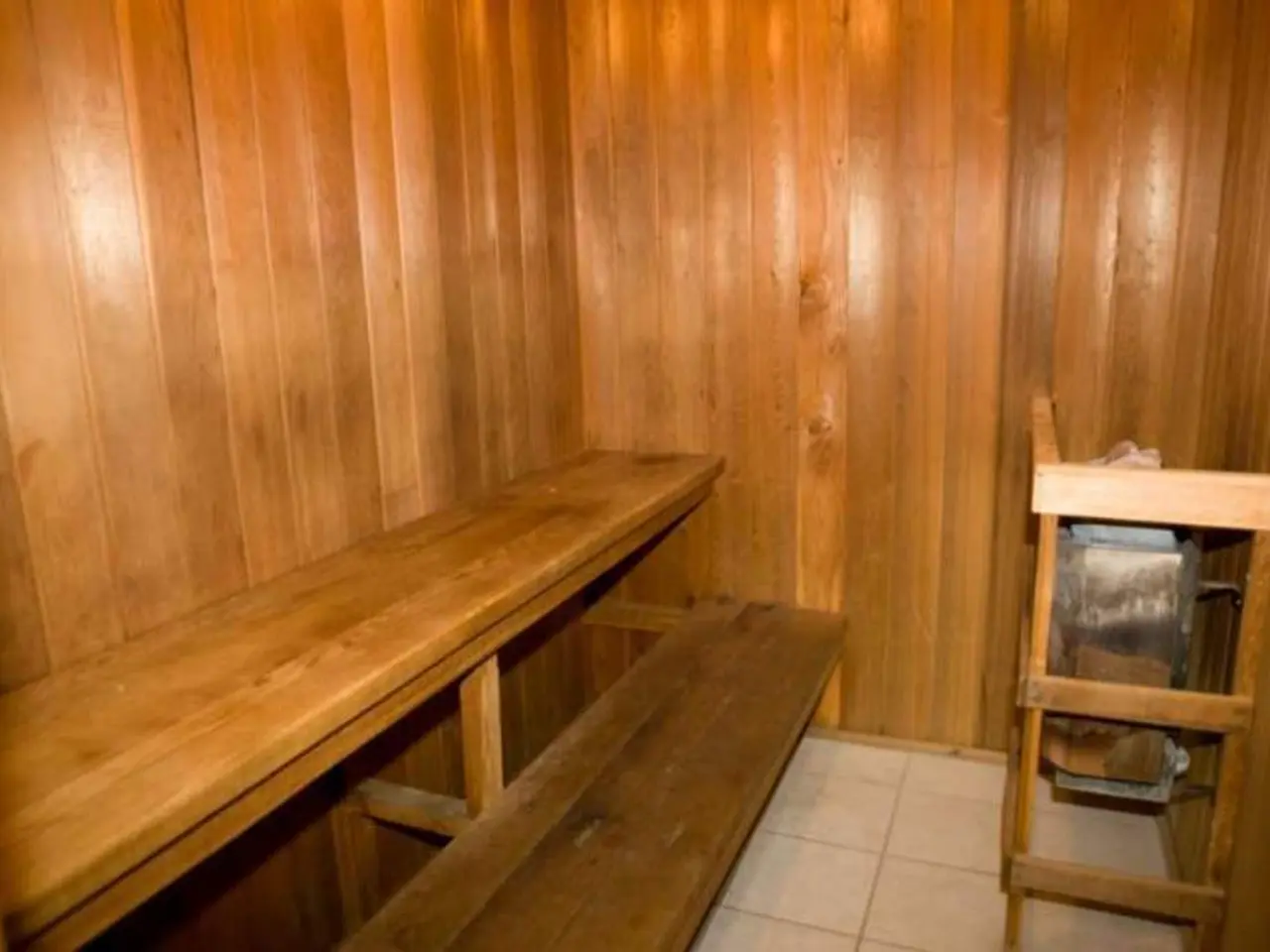The resurgence of tacky charm in the realm of aesthetics: kitsch's triumphant return
A New Lease on Life: Linoleum Makes a Comeback in Interior Design
In the world of interior design, the humble linoleum is experiencing a renaissance. This natural, sustainable, and eco-friendly material is making a strong comeback, thanks to its modern appeal and versatility.
First patented by British inventor Frederick Walton in the 1860s, linoleum has been a popular choice for domestic kitchens, schools, and hospitals due to its easy-to-clean and hard-wearing properties. However, it has often been associated with old, tacky kitchens by some clients. But designers like Beata Heuman, Leah Ring, and Mike Tuck are working to change that perception.
Heuman, an interior designer based in London, drew inspiration from the kitchen in her parents' house for a red and cream chequerboard lino flooring in her cottage in southern Sweden. For her, linoleum offers a retro cool vibe and nostalgic appeal that fits perfectly with contemporary tastes.
Mike Tuck, founder of his eponymous London architecture practice, considers linoleum a "natural super-material." He often suggests it as a lower-carbon alternative to polished concrete or micro-cement. Tuck Studio recently installed a minimalist, warm-grey linoleum floor in a renovated London house, demonstrating the material's ability to strike a subtle and refined presence.
Leah Ring, a principal designer at Another Human, uses linoleum in her colorful interiors projects. She appreciates its ability to allow for the use of saturated colors in a space that aren't always possible with other materials. Ring shows her clients its potential for beauty, helping to dispel the old stigmas associated with linoleum.
The increasing consumer demand for environmentally responsible interior choices is playing a significant role in this revival. People are looking for materials that align with sustainability values while maintaining design quality. Linoleum, with its natural composition, low VOC emissions, durability, and natural antimicrobial, antistatic, water-resistant, and fire-retardant properties, fits the bill perfectly.
In the last two years, flooring manufacturers including Tarkett and Forbo have reached carbon-negative status with their linoleum ranges. This further cements linoleum's status as a sustainable and stylish flooring option.
The success of linoleum in design projects is not limited to floors. Designers such as Martino Gamper and Hauvette & Madani are using linoleum in unexpected ways, showcasing its versatility.
Even the most hesitant clients are becoming champions of linoleum. In a renovated London house, initially nervous clients became advocates within weeks, appreciating the material's softness underfoot and its ability to add a unique, vintage touch to their space.
As we move towards a more sustainable future, it seems that linoleum is poised to take its rightful place as a key player in the world of interior design.
Linoleum, once associated with old, tacky kitchens, is now recognized by interior designers like Beata Heuman, Leah Ring, and Mike Tuck as a versatile and attractive material for modern interiors. Its nostalgic appeal, combined with its eco-friendly and sustainable properties, is making it a popular choice for homes and gardens, aligning with growing consumer demand for environmentally responsible interior design choices.
In contemporary lifestyles, linoleum's warm-grey minimalist floors can create subtle and refined presences in renovated homes, while its saturated colors in interiors projects by designers such as Leah Ring can bring vibrant energy to spaces. The increasing recognition of its beauty and design quality, alongside its low VOC emissions, durability, and natural antimicrobial, antistatic, water-resistant, and fire-retardant properties, is further solidifying linoleum's position as a trendy and sustainable material in the home-and-garden and interior-design sectors.




